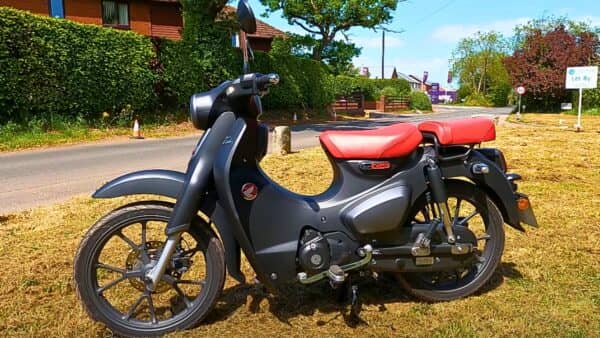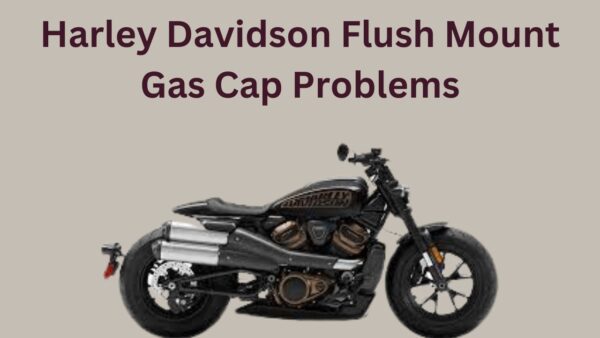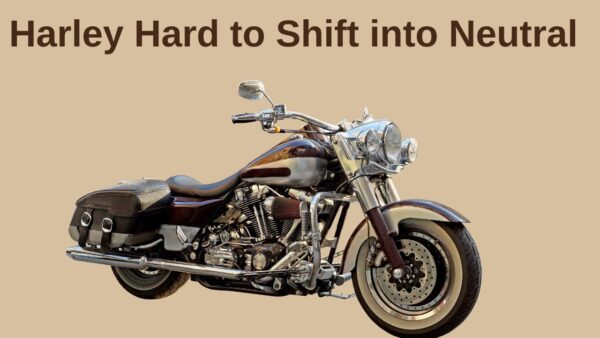The Honda Super Cub, while a classic and popular choice among motorcycle enthusiasts, is not without its share of issues.

In this article, we will dive into some common problems faced by Super Cub owners, providing insights and possible solutions.
From mechanical to operational difficulties, we aim to present a comprehensive guide to help you navigate and address these concerns.
Honda Super Cub Problems
Some common problems encountered by Super Cub owners include a weak suspension, particularly when the vehicle is heavily loaded, and issues with the longevity of the battery.
In some cases, users have reported premature wear of the brakes, largely due to the bike’s drum brakes, which require frequent maintenance.
The lack of a fuel gauge can also pose a challenge for riders, making it difficult to monitor fuel levels during a ride.
1. Starting Issue
One common problem faced by owners is the difficulty in starting the engine. This issue can be frustrating and may lead to more severe complications.
It could be due to various reasons, such as a drained battery, clogged carburettor, faulty spark plugs, or a malfunctioning starter motor.
A drained battery may not have sufficient power to crank the engine, while a clogged carburettor can prevent the correct mix of air and fuel from reaching the engine.
Faulty spark plugs can disrupt the ignition process, and a malfunctioning starter motor might fail to rotate the engine sufficiently to initiate the process.
To solve the starting problem, begin by checking the simplest potential causes first.
If the battery is drained, recharge or replace it. If the carburettor is clogged, clean it using a carburettor cleaner and replace the air filter if necessary.
For faulty spark plugs, remove and inspect them for wear or deposits and replace them if necessary.
2. Premature Wear of Brakes
This issue manifests itself as reduced braking power, leading to increased stopping distances and potentially endangering the rider.
The root cause of this problem can be aggressive riding styles, excessive load on the bike, or simply due to poor maintenance.
To address this issue, it’s important to inspect the brake pads and discs regularly.
Look for any signs of excessive wear, such as deep grooves in the brake pads or discolouration of the discs.
If any such signs are detected, it’s crucial to replace the worn-out parts immediately.
Moreover, adopting a gentler riding style can help mitigate this issue. Avoid sudden stops and try to use engine braking to complement the mechanical brakes.
Regular servicing of the brakes, which includes cleaning and lubricating the brake parts, can also prolong the lifespan of the brake system.
3. Fuel Injection System Problem
Fuel injection issues can dramatically impact the performance and efficiency of the vehicle.
This could be due to a range of issues, such as a clogged fuel injector, a faulty fuel pump, or problems with the injector control module.
If you suspect a problem with your Honda SuperCub’s fuel injection system, it’s advisable to conduct a thorough inspection.
Start by examining the fuel injectors for blockages. A clogged injector can be cleaned by using a specialized fuel injector cleaner, which is added to the fuel tank.
If the issue persists, it might be an issue with the fuel pump. This is a more complex problem that typically requires a replacement.
Finally, if the injectors and pump are functioning properly, the problem could lie in the injector control module, which might require a professional mechanic’s inspection.
4. Bad Ignition System
A faulty ignition system can lead to several issues, such as difficulty starting the bike, intermittent stalling, and poor fuel efficiency.
The ignition system involves several components: the ignition switch, the coil, the plug cap, and the spark plug.
A problem in any one of these components can cause the entire system to malfunction.
For instance, a worn-out ignition switch may not send the proper voltage to the ignition coil, leading to a weak spark or no spark at all.
On the other hand, a damaged coil due to overheating or vibration can also prevent the spark plug from firing.
To troubleshoot a bad ignition system, start by checking the spark plug for signs of wear or damage.
If it’s fouled or the gap is incorrect, it may not ignite the fuel-air mixture properly.
Then, inspect the ignition coil and plug cap for any visual damage or loose connections.
If these components look good, you might want to test the ignition switch with a multimeter to ensure it’s providing the correct voltage.
5. Lack of Fuel Gauge
One common issue faced by Super Cub owners is the absence of a fuel gauge.
This lack can prove challenging as it makes it difficult for riders to monitor their fuel consumption in real time.
Instead, the Super Cub relies on a traditional reserve fuel switch. Once you notice a change in the bike’s performance or the engine begins to cut out, it’s a signal to switch to your reserve fuel.
You can achieve this by turning the fuel valve, located under the left side of the fuel tank, from the “ON” position to “RES.”
Remember to refill as soon as possible after using the reserve fuel.
6. Issue With Carburetor
One of the common problems encountered by owners is the issue with the carburettor.
This critical engine component mixes air and fuel for internal combustion, but when it malfunctions, it can lead to a variety of problems.
An indicator of a problematic carburettor can be difficulties in starting the motorcycle, poor fuel efficiency, or irregular idle speed.
To troubleshoot this issue, start by inspecting the carburettor visually. If you notice any signs of damage or leakage, it may require replacing.
However, if the carburettor seems intact, the problem could be due to clogging. Over time, fuel residues can build up and block the passageways inside the carburettor.
To clean a clogged carburettor, follow these steps:
- Disconnect the throttle cables and fuel line, and unscrew it from the intake manifold.
- Disable the carburettor and be cautious about remembering the sequence and positioning of each part.
- Use a carburettor cleaner and a soft brush to clean each part gently. Pay extra attention to the tiny holes (jets), ensuring they are not blocked.
- Put the carburettor back together in reverse order, then reinstall it on the bike.
7. Weak Suspension
Over time, users have reported the weak suspension system. It is equipped with a relatively softer suspension setup that can struggle to cope with heavier loads or tougher terrains.
Users may experience a lack of stability while riding at higher speeds or discomfort during longer journeys due to the shocks failing to adequately absorb road bumps.
The suspension’s performance may further degrade with time and use, adding to the problem.
You can fix this issue by upgrading the suspension system with aftermarket options.
This could involve replacing the existing shock absorbers with aftermarket alternatives that are more robust and offer better damping characteristics.
As for the front suspension, installing sturdier fork springs can help to improve stability and handling.
You can also consider the common issues with the Honda Trail 125, NC750X, NC700X, 2002 Goldwing, 2017 Africa Twin & Honda Grom

Ahtsham Younas is a passionate blogger and content writer. He loves to ride motorcycles and learn the mechanical process behind the motorcycles.
He has been writing articles in the motorcycle industry since 2019 and has learned many things about motorbike niches.


